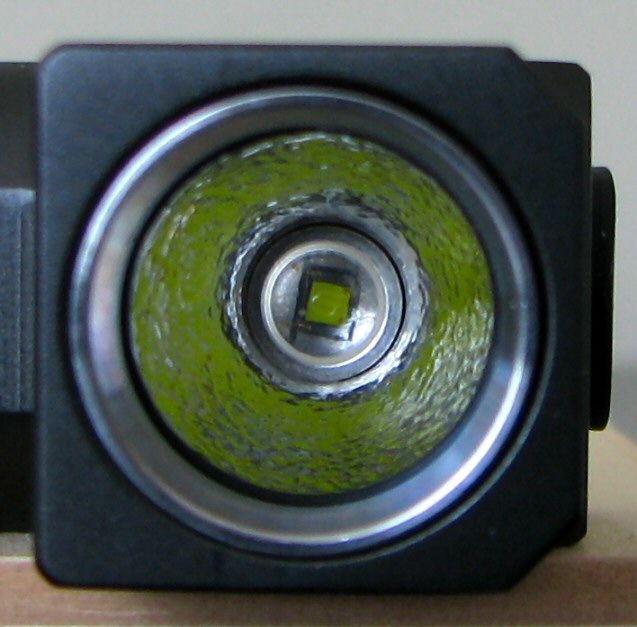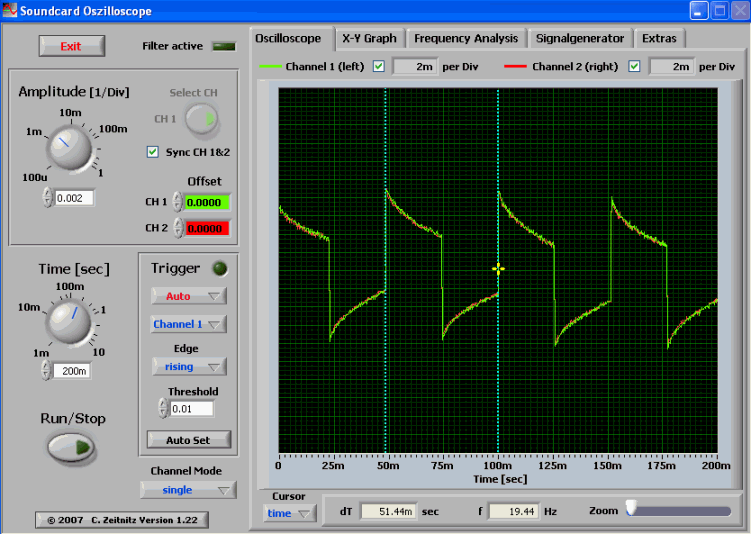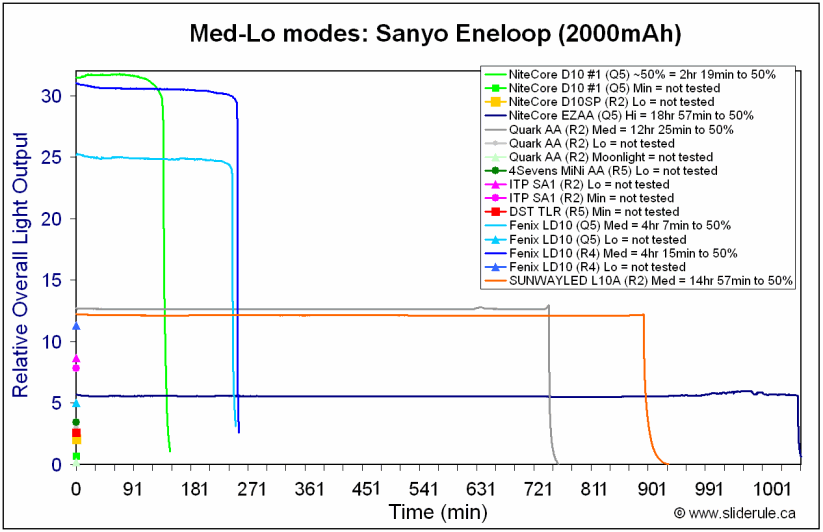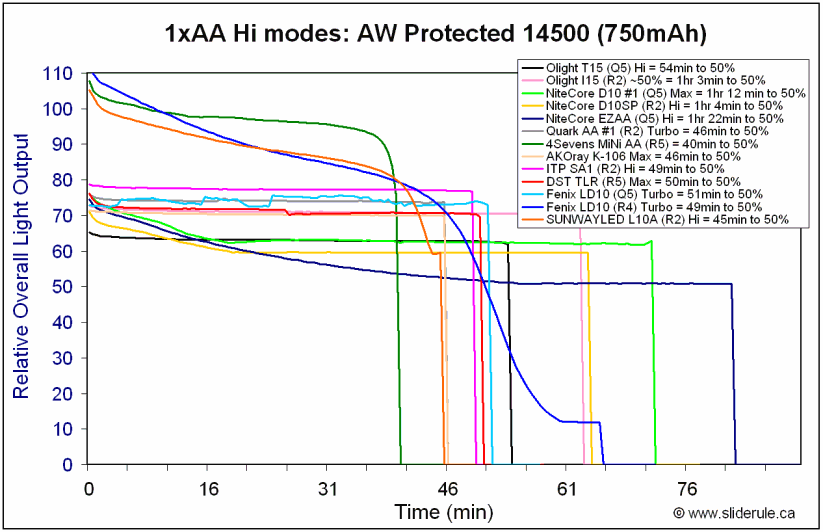Reviewer's Note: The L10A was provided for review by SUNWAYLED.
Warning: pic heavy, as usual
Manufacturer Specifications: (taken from the SUNWAYLED website)
Note the voltage range above: 3.7V Li-ion sources (4.2V nominal) are NOT supported according to the current SUNWAYLED specs (i.e. 0.9~3.2V only). This has changed from my review sample, where the included manual quoted the range as 0.9~4.2V. As such, I have tested the light on 1x14500 in this review, but I caution that this battery source is no longer officially supported.




The light comes in a fairly typical cardboard box with plastic insert. Included inside the package were the light with removable pocket clip, manual, warranty card, promotional insert, and extra o-rings.



From left to right: Duracell AA, SUNWAYLED L10A, 4Sevens Quark-AA with angle-head, Nitecore D10SP, Fenix LD10-R4, ITP SA1
L10A: Weight: 62.1g (no battery), Width (head) 36.1mm, (tailcap) 21.0mm, Length: 82.7mm



The most distinctive feature is the angle-head of this light. I haven't tested too many of this style, outside of headlamps. In this case, I expect the light is intended to be used as something you would clip on a belt or a shirt pocket, for hands-free use illumination of the path in front of you.
The light lacks any knurling on the body – only the tailcap. But the unusual shape helps with grip, as does the removable body clip.
The clip on my sample is the same style noted in my M10R and M20C reviews, and it is not very firmly attached to the body (roughly similar to the M10R). However, I understand from SUNWAYLED that this has been replaced on currently shipping L10As to a new style with a closed ring that must be inserted between the head and the body. I would consider that an improvement, as this older style could lead to accidental detaching and dropping of the light.
Like all SUNWAYLED lights I've reviewed, the anodizing is excellent on the L10A. No chips or flaws on my sample, and the color is a rich dark gunmetal grey.
Also like the other lights I've reviewed, high quality machinist square-cut screw threads are used. These are anodized, allowing for tailcap lock-out.
The L10A can tailstand or headstand (although with a bit of wobble for headstanding, due to the switch).



The light uses an electronic switch under a low-profile boot cover on the head. Feel is about typical for this kind of switch (i.e. think of the buttons on modern electronic devices, such as your DVD player, flat-screen monitor, etc).
The light comes equipped with the older style XR-E emitter (R2 output bin) inside a reasonably deep reflector (orange peel).
Beamshots
I've recently moved, and haven't had a chance to set up a proper beamshot closet yet, but here's a quick comparison to the L10A to 4Seven Quark AA with angle-head cover, both lights about ~1 meter from a white ceiling (on Hi).



The beam pattern is actually surprisingly smooth for a XR-E, likely due to the heavily textured reflector. But this also reduces the centre-beam throw of the light.
Scroll down for some throw and output numbers.
User Interface
On/off and mode switching is controlled entirely by the electronic switch in the head. As such, there needs to be a "standby" current at all times.
Press and release the switch to activate the light on Hi. Press and release again to turn off. Light also has a momentary mode - just press and hold the switch from off (once you release the switch, the light will shut-off).
While on, press and hold the switch to activate the tactical strobe mode. Strobe stops as soon as you let go of the switch (i.e. strobe is momentary only). You can lock the strobe on by a quick click followed immediately by a press-hold. The strobe will then persist until you turn the light off or switch modes.
From on, double-press the switch to change the constant output mode (i.e. press and release twice, with less than a second between each cycle). The next mode after Hi is Lo, followed by Med if you double-press again. The light cycles in this Hi – Lo – Med sequence indefinitely on repeated double-presses.
There is no memory mode – the light always comes on in Hi.
UPDATE 9/14/10: In response to a user's question, I am pleased to report that the controller can respond immediately to multiple presses, even from off. Thus, you can triple-click from Off for Lo, or "penta-click" for Med. However, you will briefly flash through the Hi mode mode first - but you could always block the output with your hand initially if you wanted to start on a lower setting.
Standby/Parasitic Current
The parasitic drain on lights with electronic switches is always a concern, so I measured it on my sample:
1xEneloop NiMH: 52.6uA, which for a 2000mAh Eneloop, would translate into 4.3 years. :thumbsup:
Certainly no problem here. But what about 1x14500? Although not officially supported, I gave it a shot anyway:
1x14500 Li-ion: 1.8mA, which for a 900mAh 14500, would translate into just under 21 days
Clearly, the standby current for my sample on 14500 is a concern – a fully charged cell would be completely drained within 3 weeks, even if never used. This may partially explain why this battery source is no longer officially supported.
In any case, if you plan to use the unsupported 14500 battery source, I recommend you lock out the light at the tailcap when not in use.
PWM

Unlike the other SUNWAYLED lights I've tested, I was able to detect a PWM signal on the L10A, but only at the lowest level, and at an unnoticeable frequency – 7.7 kHz.
There is no sign of PWM on Med or Hi.
Strobe

Strobe was measured at a "tactical" (and nauseating :green 19.4 Hz.
19.4 Hz.
Testing Method: All my output numbers are relative for my home-made light box setup, a la Quickbeam's flashlight reviews method. You can directly compare all my relative output values from different reviews - i.e. an output value of "10" in one graph is the same as "10" in another. All runtimes are done under a cooling fan.
Throw/Output Summary Chart:


On standard batteries, the light is heavily driven on Hi, with the highest output I've seen for a R2-equipped light. Throw is toward the low end for this class however, likely due to the heavily textured reflector.
On the unsupported 1x14500 battery source, output is considerably brighter on Hi, and is again at the top of the class for a R2-equipped light.
Output/Runtime Comparison







Output/runtime performance on Med/Hi are very good – definitely at the top-end of a XR-E R2-equipped light. The light is clearly current-controlled at these levels.
Note that the Med output level is closer to the Lo level of most lights, however.
I haven't done Lo mode runtimes, as the level is quite low (not quite "moonlight", but close).
Potential Issues
1x14500 Li-ion is not officially supported (i.e. 0.9~3.2V voltage range only). Although the light performed well on 14500 in my testing (i.e. relative output levels are maintained, with Hi mode being higher than standard batteries), the standby current on 14500 is sufficiently high to drain a fully charged cell in under 3 weeks.
Relative lack of knurling on the body or switch cover, light could be slippery when wet.
Light lacks a memory feature, and always comes on in Hi.
The older style clip on my sample does not attach securely, but currently shipping L10A lights should have the more secure new style clip
Preliminary Observations
Like the other SUNWAYLED lights I've reviewed recently, the L10A is generally a solid and well-built light. The angle-head design is different, making this something of niche product. I suspect it would find the greatest use as the body-equivalent of a headlamp (i.e. something you clip onto a pocket or belt to illuminate the way in front of you).
Given that intended usage, I'm glad to hear they have moved to a more secure clip on currently shipping samples. The one on my early sample (shown here) is not very firmly attached. Although I haven't tested this new clip with a closed ring (that must be inserted between the body and the head), I am sure that would work better.
The light showed very good runtime performance on the Med/Hi output levels - definitely top-of-class for a XR-E R2-equipped light (i.e. clearly current-controlled). Note though that the Med level's output is bit lower than typical (closer to most lights Lo), and the L10A's Lo mode is closer to a "moonlight" level. The L10A's Lo level also uses PWM, but at a high enough frequency not to be detectable by eye (7.7 kHz). :thumbsup:
The beam profile is good for this sort of light. While the throw is at the low end for the 1xAA class, this is not unreasonable for its intended purpose (i.e. you want to illuminate a reasonably wide area in front of you). My sample also has a surprisingly smooth beam, give the XR-E emitter used.
It is a shame that 1x14500 is not officially supported on the light. This battery source actually worked quite well in my testing – but the high standby current means that you would need to keep the light locked-out at the tailcap when not in use. You are best sticking with standard AA batteries for regular use, where the standby current is low enough to give you several years shelf life.
A distinctive little light, with good performance on regular AA batteries.
Warning: pic heavy, as usual
Manufacturer Specifications: (taken from the SUNWAYLED website)
- CREE XR-E R2 LED,
- Three modes constant output, one strobe mode (below is the output and runtime of using one 2600mAH Ni-MH battery)
- Three modes constant output: 130 Lumens (1 hrs)- 30 Lumens (35 hrs)- 3Lumens (100 hrs)
- Strobe mode:130 Lumens (1.5hrs)
- push-button head switch
- Digitally regulated output - maintains constant brightness
- Using one single 1.5V AA (Alkaline, Ni-MH, Lithium) battery
- Working voltage:0.9~3.2V
- Reflector of good quality maintains both great throw distance and spread,
- Dimension:81.1(length) x21mm(head diameter)
- Weight: 60.6g(battery excluded)
- Aerospace-grade aluminum alloy
- Military Specification Type III hard anodized
- Waterproof accords with IPX-8 standard
- Ultra-clear toughened glass lens resists scratches and impacts
- Head stand / tail stand and can be used as a candle
- Accessories: metal clip, O-ring
- Estimated MSRP: ~$57
Note the voltage range above: 3.7V Li-ion sources (4.2V nominal) are NOT supported according to the current SUNWAYLED specs (i.e. 0.9~3.2V only). This has changed from my review sample, where the included manual quoted the range as 0.9~4.2V. As such, I have tested the light on 1x14500 in this review, but I caution that this battery source is no longer officially supported.




The light comes in a fairly typical cardboard box with plastic insert. Included inside the package were the light with removable pocket clip, manual, warranty card, promotional insert, and extra o-rings.



From left to right: Duracell AA, SUNWAYLED L10A, 4Sevens Quark-AA with angle-head, Nitecore D10SP, Fenix LD10-R4, ITP SA1
L10A: Weight: 62.1g (no battery), Width (head) 36.1mm, (tailcap) 21.0mm, Length: 82.7mm



The most distinctive feature is the angle-head of this light. I haven't tested too many of this style, outside of headlamps. In this case, I expect the light is intended to be used as something you would clip on a belt or a shirt pocket, for hands-free use illumination of the path in front of you.
The light lacks any knurling on the body – only the tailcap. But the unusual shape helps with grip, as does the removable body clip.
The clip on my sample is the same style noted in my M10R and M20C reviews, and it is not very firmly attached to the body (roughly similar to the M10R). However, I understand from SUNWAYLED that this has been replaced on currently shipping L10As to a new style with a closed ring that must be inserted between the head and the body. I would consider that an improvement, as this older style could lead to accidental detaching and dropping of the light.
Like all SUNWAYLED lights I've reviewed, the anodizing is excellent on the L10A. No chips or flaws on my sample, and the color is a rich dark gunmetal grey.
Also like the other lights I've reviewed, high quality machinist square-cut screw threads are used. These are anodized, allowing for tailcap lock-out.
The L10A can tailstand or headstand (although with a bit of wobble for headstanding, due to the switch).



The light uses an electronic switch under a low-profile boot cover on the head. Feel is about typical for this kind of switch (i.e. think of the buttons on modern electronic devices, such as your DVD player, flat-screen monitor, etc).
The light comes equipped with the older style XR-E emitter (R2 output bin) inside a reasonably deep reflector (orange peel).
Beamshots
I've recently moved, and haven't had a chance to set up a proper beamshot closet yet, but here's a quick comparison to the L10A to 4Seven Quark AA with angle-head cover, both lights about ~1 meter from a white ceiling (on Hi).



The beam pattern is actually surprisingly smooth for a XR-E, likely due to the heavily textured reflector. But this also reduces the centre-beam throw of the light.
Scroll down for some throw and output numbers.
User Interface
On/off and mode switching is controlled entirely by the electronic switch in the head. As such, there needs to be a "standby" current at all times.
Press and release the switch to activate the light on Hi. Press and release again to turn off. Light also has a momentary mode - just press and hold the switch from off (once you release the switch, the light will shut-off).
While on, press and hold the switch to activate the tactical strobe mode. Strobe stops as soon as you let go of the switch (i.e. strobe is momentary only). You can lock the strobe on by a quick click followed immediately by a press-hold. The strobe will then persist until you turn the light off or switch modes.
From on, double-press the switch to change the constant output mode (i.e. press and release twice, with less than a second between each cycle). The next mode after Hi is Lo, followed by Med if you double-press again. The light cycles in this Hi – Lo – Med sequence indefinitely on repeated double-presses.
There is no memory mode – the light always comes on in Hi.
UPDATE 9/14/10: In response to a user's question, I am pleased to report that the controller can respond immediately to multiple presses, even from off. Thus, you can triple-click from Off for Lo, or "penta-click" for Med. However, you will briefly flash through the Hi mode mode first - but you could always block the output with your hand initially if you wanted to start on a lower setting.
Standby/Parasitic Current
The parasitic drain on lights with electronic switches is always a concern, so I measured it on my sample:
1xEneloop NiMH: 52.6uA, which for a 2000mAh Eneloop, would translate into 4.3 years. :thumbsup:
Certainly no problem here. But what about 1x14500? Although not officially supported, I gave it a shot anyway:
1x14500 Li-ion: 1.8mA, which for a 900mAh 14500, would translate into just under 21 days

Clearly, the standby current for my sample on 14500 is a concern – a fully charged cell would be completely drained within 3 weeks, even if never used. This may partially explain why this battery source is no longer officially supported.
In any case, if you plan to use the unsupported 14500 battery source, I recommend you lock out the light at the tailcap when not in use.
PWM

Unlike the other SUNWAYLED lights I've tested, I was able to detect a PWM signal on the L10A, but only at the lowest level, and at an unnoticeable frequency – 7.7 kHz.
There is no sign of PWM on Med or Hi.
Strobe

Strobe was measured at a "tactical" (and nauseating :green
Testing Method: All my output numbers are relative for my home-made light box setup, a la Quickbeam's flashlight reviews method. You can directly compare all my relative output values from different reviews - i.e. an output value of "10" in one graph is the same as "10" in another. All runtimes are done under a cooling fan.
Throw/Output Summary Chart:


On standard batteries, the light is heavily driven on Hi, with the highest output I've seen for a R2-equipped light. Throw is toward the low end for this class however, likely due to the heavily textured reflector.
On the unsupported 1x14500 battery source, output is considerably brighter on Hi, and is again at the top of the class for a R2-equipped light.
Output/Runtime Comparison







Output/runtime performance on Med/Hi are very good – definitely at the top-end of a XR-E R2-equipped light. The light is clearly current-controlled at these levels.
Note that the Med output level is closer to the Lo level of most lights, however.
I haven't done Lo mode runtimes, as the level is quite low (not quite "moonlight", but close).
Potential Issues
1x14500 Li-ion is not officially supported (i.e. 0.9~3.2V voltage range only). Although the light performed well on 14500 in my testing (i.e. relative output levels are maintained, with Hi mode being higher than standard batteries), the standby current on 14500 is sufficiently high to drain a fully charged cell in under 3 weeks.
Relative lack of knurling on the body or switch cover, light could be slippery when wet.
Light lacks a memory feature, and always comes on in Hi.
The older style clip on my sample does not attach securely, but currently shipping L10A lights should have the more secure new style clip
Preliminary Observations
Like the other SUNWAYLED lights I've reviewed recently, the L10A is generally a solid and well-built light. The angle-head design is different, making this something of niche product. I suspect it would find the greatest use as the body-equivalent of a headlamp (i.e. something you clip onto a pocket or belt to illuminate the way in front of you).
Given that intended usage, I'm glad to hear they have moved to a more secure clip on currently shipping samples. The one on my early sample (shown here) is not very firmly attached. Although I haven't tested this new clip with a closed ring (that must be inserted between the body and the head), I am sure that would work better.
The light showed very good runtime performance on the Med/Hi output levels - definitely top-of-class for a XR-E R2-equipped light (i.e. clearly current-controlled). Note though that the Med level's output is bit lower than typical (closer to most lights Lo), and the L10A's Lo mode is closer to a "moonlight" level. The L10A's Lo level also uses PWM, but at a high enough frequency not to be detectable by eye (7.7 kHz). :thumbsup:
The beam profile is good for this sort of light. While the throw is at the low end for the 1xAA class, this is not unreasonable for its intended purpose (i.e. you want to illuminate a reasonably wide area in front of you). My sample also has a surprisingly smooth beam, give the XR-E emitter used.
It is a shame that 1x14500 is not officially supported on the light. This battery source actually worked quite well in my testing – but the high standby current means that you would need to keep the light locked-out at the tailcap when not in use. You are best sticking with standard AA batteries for regular use, where the standby current is low enough to give you several years shelf life.
A distinctive little light, with good performance on regular AA batteries.
Last edited:

